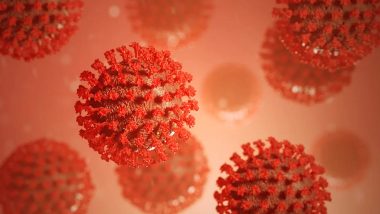Washington, December 18: A new study by University of Washington Health Sciences/UW Medicine strongly claims that COVID-19 virus can show cognitive effects to the patients such as brain fog and fatigue.
The study published in Nature Neuroscience shows that the SARS-CoV-2, the cause of COVID-19, can enter the brain. Researchers, through a mouse model, found that the spike protein, often depicted as the red arms of the virus, can cross the blood-brain barrier in mice. Coronavirus and Social Distance: Short People More Prone to Contract COVID-19, Must Maintain More Than 2-Metre Distance to Avoid Contracting the Virus, Suggest Singapore’s Researchers.
The spike protein often called the S1 protein, dictates where the virus can enter. Usually, the virus does the same thing as its binding protein, said lead author William A. Banks, a professor of medicine at the University Of Washington School Of Medicine and a Puget Sound Veterans Affairs Healthcare System physician and researcher.
Banks said, "Binding proteins like S1 usually by themselves cause damage as they detach from the virus and cause inflammation. The S1 protein likely causes the brain to release cytokines and inflammatory products."
In science circles, the intense inflammation caused by the COVID-19 infection is called a cytokine storm. The immune system, upon seeing the virus and its proteins, overreacts in its attempt to kill the invading virus. The infected person is left with brain fog, fatigue and other cognitive issues.
Banks and his team saw this reaction with the HIV virus and wanted to see if the same was happening with SARS CoV-2. Banks said, "S1 protein in SARS-CoV2 and the GP 120 protein in HIV-1 function similarly. They are glycoproteins -- proteins that have a lot of sugars on them, hallmarks of proteins that bind to other receptors."
The researchers further discovered that both these proteins function as the arms and hand for their viruses by grabbing onto other receptors. Both cross the blood-brain barrier and S1, like gp120, is likely toxic to brain tissues.
Fifteen people in the lab started their experiments on the S1 protein in April. They enlisted long-time collaborator Jacob Raber, a professor in the departments of Behavioral Neuroscience, Neurology, and Radiation Medicine, and his teams at Oregon Health & Science University.
The study could explain many of the complications from COVID-19.
"An additional explanation is that the virus enters the respiratory centres of the brain and causes problems there as well," said Banks.
As for people taking the virus lightly, Banks stated, "You do not want to mess with this virus. Many of the effects that the COVID virus has could be accentuated or perpetuated or even caused by virus getting in the brain and those effects could last for a very long time."
(The above story is verified and authored by ANI staff, ANI is South Asia's leading multimedia news agency with over 100 bureaus in India, South Asia and across the globe. ANI brings the latest news on Politics and Current Affairs in India & around the World, Sports, Health, Fitness, Entertainment, & News. The views appearing in the above post do not reflect the opinions of LatestLY)













 Quickly
Quickly


